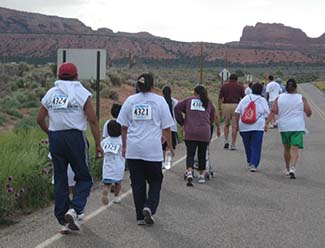Community Health Assessment

The IHS Health Promotion/Disease Prevention program and the Stanford University HP/DP Resource Center developed a Restoring Balance: Community-Owned Wellness manual that focuses on community wellness and various approaches to improve the health of American Indians and Alaska Natives. This resource along with other Community Assessment tools could assist communities to direct their own services and to play a key role in the health of the community. Community assessments can occur in multiple ways, and require a considerable commitment of time, leadership, and financial resources by individuals and lead organizations/agencies.
Planning Considerations
The following are community considerations when implementing and utilizing health assessments.
Important reasons for conducting a community health assessment include:
- Engaging Tribal and community leadership in identifying and resolving health problems;
- Identifying, agreeing upon, and prioritizing which health issues will be managed first;
- Obtaining commitments from the community to work together on the problems; and
- Developing a health plan that will be meaningful to and have support from the community.
Comprehensive community health assessments may include most or all of the following:
- Establishing a coalition of community leaders and organizations to identify the community issues, designing the assessment, conducting the assessment, interpreting its findings, prioritizing the health problems to be managed, and designing a health plan for the community.
- Identifying the health indicators to be measured. These include indices of community strengths and resources available to resolve health problems; indices of illness and causes of death; and modifiable behavioral risk factors that contributes to poor health and conditions.
- Collecting and interpreting the health indicator data and reporting of the findings to interested parties. Health data are needed to identify the most important health problems and to provide benchmarks for monitoring change.
- Selecting and prioritizing the health problems to be resolved by the community.
- Preparing strategic and work plans to resolve the priority health problems. These include identification of leadership and partners to carrying out proposed plan.
- Implementing and evaluating programs to monitor and improve the selected health problems.
Resources
The IHS HPDP staff have organized tools that will be of most interest to AI/AN communities.


